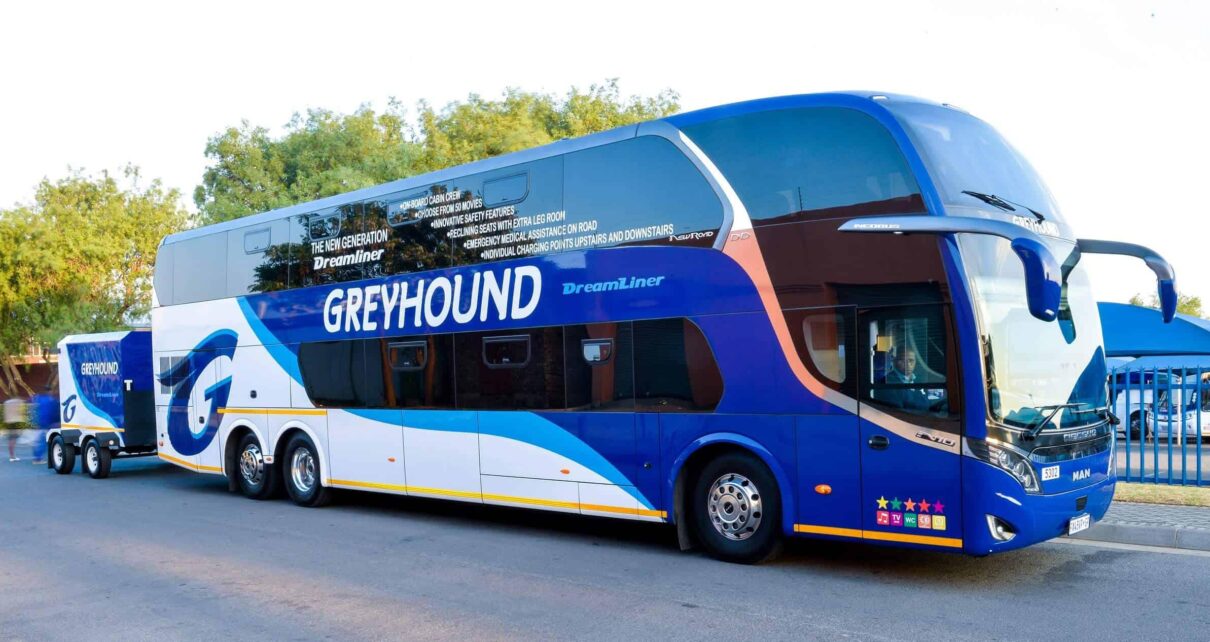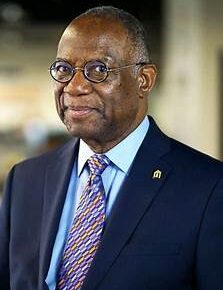The US Government should buy the Greyhound bus company because:
- Switching from car to motocoach cuts carbon by an astonishing 88%.
- Millions of Americans rely on motorcoaches, but the pandemic hit bus companies hard.
Joe Biden’s love of trains is well known. “Amtrak Joe” has vowed to invest in America’s crumbling railways and encourage Americans to embrace clean and green mass transit over gas-guzzling automobiles. For decades, the American left has urged the government to make massive investments in rail travel for just these reasons. Yet there is another simple, cheap, and instant way to upgrade our public transit infrastructure, reduce carbon, alleviate traffic, and provide efficient and affordable intercity travel: the government should buy Greyhound.
Greyhound Canada recently announced that the company plans to permanently cease operations there. The move was yet another sign that the financial woes of the inter-city motorcoach industry are not going away. Since the pandemic no transport industry has been more hurt than commercial bus lines. Nearly all schedules for the entire industry were shut down for months with no end in sight; Greyhound USA has recently been able to reopen most of its scheduled routes, but a continued depression in ridership means the company can’t keep all of its lines open. Greyhound has even resorted to selling stations in Chicago and Denver.
Unlike most major transport industries, inter-city bus operators received very little help from the United States government during the pandemic. Commercial airlines got a whopping $60bn, Amtrak got $1.5bn, and public transit was awarded a much-needed $30bn to keep the trains, buses, and trolleys moving. Yet motorcoaches – which collectively make nearly 600 million passenger trips a year in the United States, and employ around 100,000 workers – received a paltry $100m.
Despairing bus industry executives organized a “Rolling Rally” in Washington to demand more cash. While the sector has since received slightly greater attention it’s unlikely that the funds will be enough to make up for the loss in ridership, which dipped to historic lows.
A cash handout is effectively a bet that the industry will recover to pre-Covid profits and grow after; right now that’s not a bet any private investor would make.
Low-cost air travel and affordable car travel, have made things difficult for the intercity bus industry. Yet bus travel does maintain a great advantage over both rail and air competition: the sheer number of destinations a rider can choose. Using America’s already nationalized interstate system, Greyhound alone still services some 2,400 station stops. Unfortunately, this practical strength is also a business weakness.
Greyhound is in trouble, which means the feds can buy the company for cheap … the federally owned bus system could pay for its own operating cost through fares
A daily roundtrip from Newport News to Norfolk is significantly less profitable than hourly trips to and from a major hub such as New York City. Lacking extensive regulation and government subsidy, Greyhound executives are forced to focus their investments on the most profitable schedules while ditching small-town and rural communities. Yet this is another bind: while coastal schedules have the highest ridership they also face the stiffest competition from budget and Chinatown bus lines such as Megabus and from Amtrak and regional rail. The profit squeeze is tight and it will only get tighter.
So the only way to save the intercity bus system as it exists is to greatly increase ridership to and from low-priority destinations while staying competitive on the highly profitable coastal corridors. In order to do both, you need to greatly reduce the price of fares – which have increased in recent years and are more expensive than comparable service in other countries.
That’s where the US government comes in.
Greyhound is in trouble, which means the feds can buy the company for cheap. Once purchased, the government could temporarily ignore the profit problem and focus on rescuing the fleet – providing affordable travel as a public good. Just as the US post office does not use a dime of taxpayer money, the federally owned Greyhound bus system could pay for its own operating cost through fares; without the burden of costly executives and grubby shareholders, the organization would likely save a great deal of money in overhead.
The benefits of an old-fashioned nationalization scheme like this are enormous. It would simultaneously save the Greyhound bus system, which transports up to 17 million people a year, put it to good public use with positive impacts elsewhere in the economy, and protect thousands of stable union jobs. But there’s another, less obvious benefit.
The British environmentalist George Monbiot raised eyebrows a few years ago when he argued that, as far as carbon emissions are concerned, our best bet is not just to rebuild and expand the railways but instead to provide nearly universal motorcoach transit.
Switching from car to coach, Monbiot noted, cuts carbon by an astonishing 88%. And these efficiencies could be dramatically increased in a relatively short period of time by improving the bus fleet technology with all-electric vehicles and by some clever infrastructure tweaks.
For one, let’s move bus stations out of city centers and to the edges of major hub cities, nearer to the interstate highways. By getting rid of the awful winding trips buses make in and out of city centers, motorcoaches would be free to hit the open road and speed off to their destination. Even better, let’s add dedicated motorcoach lanes to major highways to help speed bus travel. Highway bus lanes would not only provide speedier service for bus passengers but also greatly alleviate overall traffic. Each full coach would replace many cars’ worth of traffic. And, as Monbiot notes, the buses would effectively advertise themselves: individual motorists, watching buses zoom by them, will soon realize that if you want to get somewhere fast, the bus is the way to go.
With a few small tweaks, a government-owned Greyhound system could go from clunky, expensive, and slow to efficient, affordable, and speedy. But such a transformation would require a state visionary enough to challenge the dogmas of private market competition.










